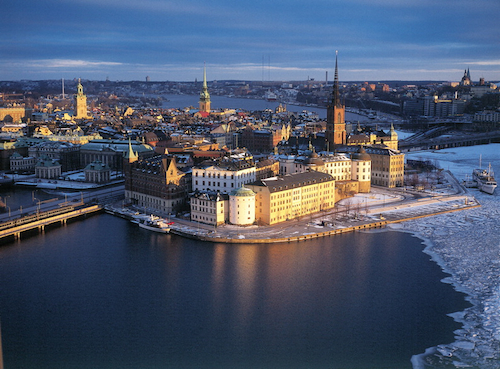Top Dialects of the Swedish Language
With just 10 million native speakers, Swedish is a relatively small language. It’s also quite new: 1000 years ago, a unified version of Swedish didn’t exist, with pockets of people across Scandinavia all speaking a local tongue. It wasn’t until Sweden was unified around 1100 CE that a standard version of the language emerged. Still, to this day, local Swedish dialects remain strong, and vary considerably in terms of their pronunciation and vocabulary. Here’s some of the top dialects in the Swedish language.
 Image via Botan / Wikipedia
Image via Botan / Wikipedia
1. Standard
Interestingly, Swedish wasn’t legally declared as the official language of Sweden until 2009. But a standardized written and spoken form of Swedish had existed long before that point. Standard Swedish is most similar to the language used in Stockholm, the nation’s capital and most populous city. However, almost all inhabitants of Sweden — regardless of their regional dialect — are capable of communicating, both in spoken and written form, in Standard Swedish. If you’re learning Swedish, it’s almost certain that you are being taught this dialect.
2. Finland
The majority of Swedish speakers reside within Sweden; however, there is a sizable Swedish-speaking population in Finland, as well. In fact, Swedish is one of the official languages of Finland, along with Finnish.
Though it’s undeniable that Finland Swedish has been significant influenced by Finnish, the dialect is more than just Standard Swedish with a Finnish twang. Indeed, it comes complete with its own phonological and lexical rules. It also features a different vocabulary from Standard Swedish, particularly in its regular use of loanwords from Finnish.
How good is your Swedish? Find out by taking our free online Swedish level test!
3. Southern Swedish/Scanian
Scania County, located on the southernmost end of Sweden, is home to over a million inhabitants, and includes important cities such as Malmö. The dialect characteristic of this region is highly influenced by Danish, in both its pronunciation and its vocabulary.
For example, the word “duckling” is andunge in Standard Swedish, but is elling in the Scanian Swedish dialect, which more closely resembles the Danish ælling. Similarly, the word “potato” in Scanian Swedish is pantoffel, which is closer to the Danish kartoffel than the Standard Swedish potatis.
4. Norrland
 Image via Leojth / Wikipedia
Image via Leojth / Wikipedia
Norrland is an expansive region in the north of Sweden. Norrland features many small villages, and there are numerous sub-dialects within the region. Still, there are some consistent features that differentiate Norrland dialects from Standard Swedish.
A notable feature of the Norrland accent is the dropping of the suffix -er in the present tense of certain verbs. For example, in Standard Swedish, han springer means “he runs”; in Norrland Swedish, this would be reduced to han spring.
The Norrland dialect is also particularly amenable to compounds involving adjectives and nouns. For instance, “long hair” in Standard Swedish is det långa håret (literally “the long hair”), but in Norrland Swedish can be compounded to långhåre, which is a compound consisting of the adjective lång and the noun håre.
This list only scratches the surface of dialects in the Swedish language. There are many sub-dialects spoken by only a handful of people in small towns and villages. Often times, these dialects are so strong that they are not mutually intelligible, meaning that speakers of different dialects will have to use Standard Swedish in order to understand each other.
Given that nearly everyone in Sweden speaks Standard Swedish, you’ll be able to communicate well if you learn just that dialect. Of course, the best and fastest way to learn Swedish is to take classes from a native-speaking Swedish teacher, who can answer any question you might have about any Swedish dialect. Contact us to find out how we can help you learn Swedish.


